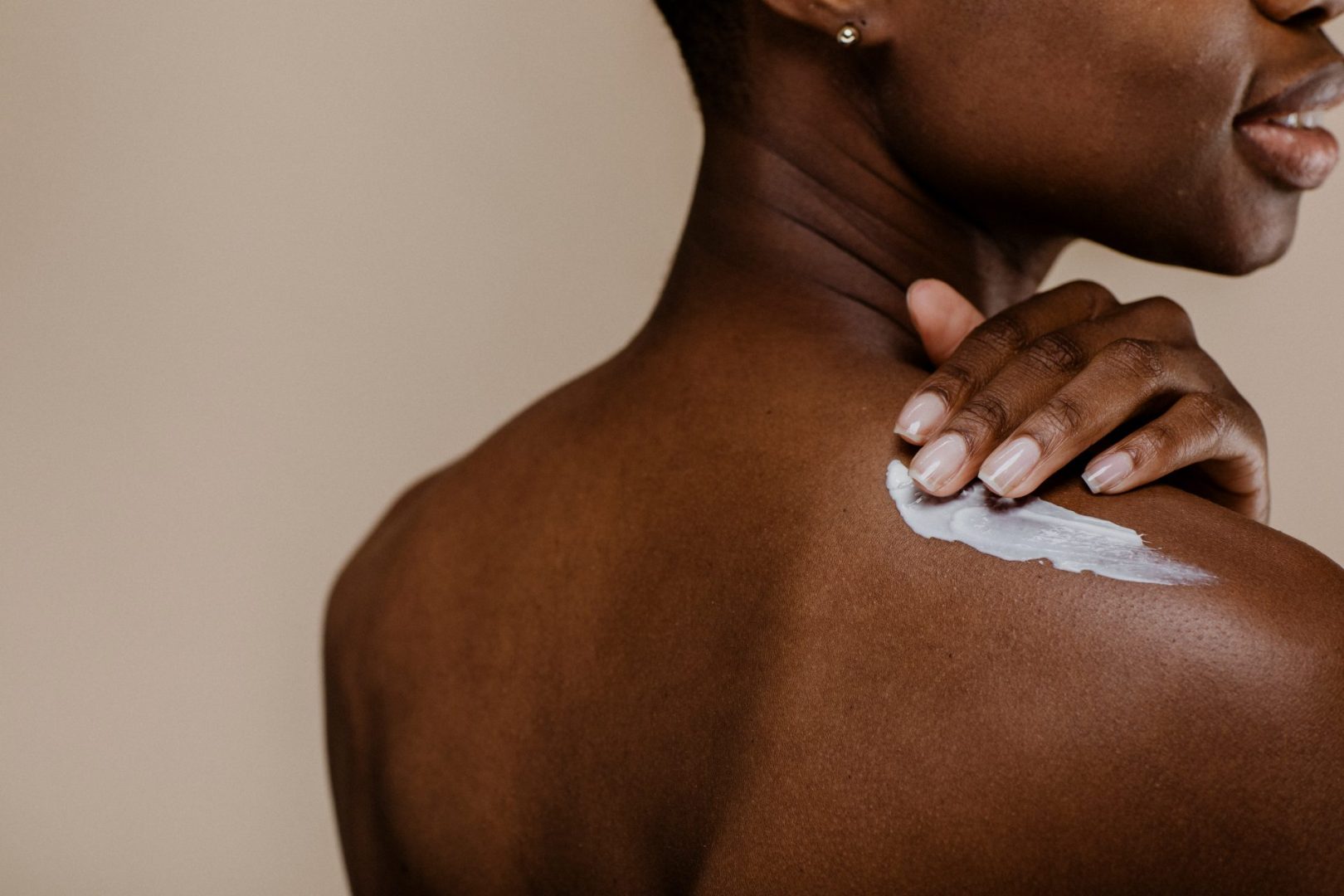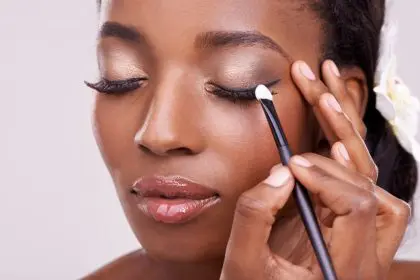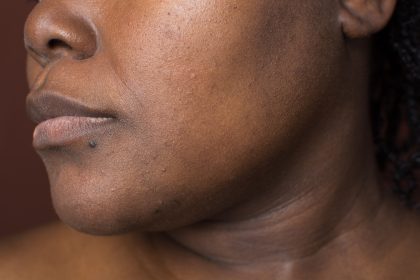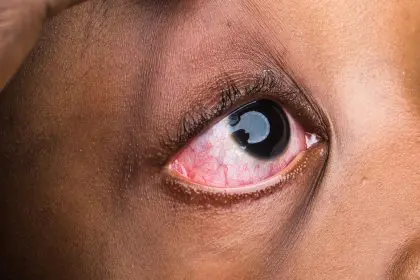Your skin feels tight, looks dull, and no matter how much moisturizer you slather on, nothing seems to help. Sound familiar? You’re not alone in this frustrating skincare mystery that affects millions of people worldwide. The problem isn’t necessarily that you’re using the wrong products—it’s that you might be treating the wrong condition entirely.
The confusion between dry and dehydrated skin represents one of the most common skincare mistakes people make, leading to ineffective treatments, wasted money on products that don’t work, and ongoing skin frustration. Understanding the fundamental difference between these two conditions could be the key to finally achieving the healthy, glowing complexion you’ve been seeking.
While the terms “dry” and “dehydrated” are often used interchangeably in casual conversation, they describe completely different skin conditions that require distinct approaches to treatment. Misidentifying your skin’s actual needs can lead to months or even years of using products that not only fail to help but may actually make your skin problems worse.
The stakes of getting this right extend beyond mere aesthetics. Properly caring for your skin based on its actual condition can prevent premature aging, reduce sensitivity and irritation, and restore your skin’s natural barrier function. Conversely, treating dehydrated skin as dry skin, or vice versa, can disrupt your skin’s delicate balance and create additional problems you never had before.
Understanding the fundamental difference
Dry skin and dehydrated skin stem from completely different underlying causes, which explains why they require such different treatment approaches. Dry skin is a skin type determined by genetics and characterized by insufficient oil production from the sebaceous glands. This condition is permanent and inherent to your skin’s natural function, meaning you’re born with the tendency toward dry skin and will always need to manage it accordingly.
Dehydrated skin, on the other hand, is a temporary skin condition caused by lack of water in the skin cells. Unlike dry skin, dehydration can affect any skin type—including oily skin—and typically results from external factors like weather, lifestyle choices, or product use. The crucial distinction is that dehydrated skin can be corrected and restored to normal function, while dry skin requires ongoing management.
The confusion between these conditions often arises because they can produce similar symptoms, such as tightness, flaking, and dullness. However, the underlying mechanisms are entirely different: dry skin lacks oil, while dehydrated skin lacks water. This fundamental difference explains why oil-based treatments work for dry skin but may feel heavy and uncomfortable on dehydrated skin, while water-based treatments can provide relief for dehydration but leave truly dry skin feeling unsatisfied.
Understanding your skin’s actual condition becomes even more important when you consider that it’s possible to have both dry and dehydrated skin simultaneously. This combination creates particularly challenging symptoms and requires a carefully balanced approach that addresses both oil and water deficiencies without overwhelming the skin.
The 8 telltale signs to identify your skin condition
1. The pinch test reveals water content levels
This simple diagnostic test can instantly reveal whether your skin is suffering from dehydration. Gently pinch a small section of skin on the back of your hand or on your cheek, then release it quickly. Healthy, well-hydrated skin will immediately snap back into place, while dehydrated skin will take several seconds to return to normal or may even remain tented for a moment.
The pinch test works because well-hydrated skin cells are plump and elastic, allowing the skin to maintain its shape and bounce back quickly when manipulated. Dehydrated skin cells lack sufficient water content, making the skin less elastic and slower to recover from manipulation. This test is particularly effective because it measures the skin’s actual water content rather than surface conditions that might be influenced by recent product application.
For the most accurate results, perform this test on clean skin that hasn’t been treated with moisturizers or other products for several hours. The back of your hand provides a good testing location because the skin there is thin and responsive, making changes in hydration levels more apparent. However, avoid testing immediately after washing your hands, as temporary swelling from water exposure can affect results.
2. Surface texture tells the complete story
The way your skin feels to the touch provides crucial clues about whether you’re dealing with dryness or dehydration. Dry skin typically feels rough, coarse, or sandpaper-like, with a texture that remains consistent regardless of recent skincare routines. This roughness results from inadequate oil production, which fails to create the smooth, protective barrier that gives healthy skin its soft texture.
Dehydrated skin, conversely, may feel tight and taut but relatively smooth to the touch. The tightness creates a sensation of skin that feels too small for your face, particularly after cleansing or exposure to air conditioning. This tightness often intensifies throughout the day and may be accompanied by a sensation that your skin is pulling or stretching when you make facial expressions.
Pay attention to how your skin feels immediately after cleansing with a gentle cleanser. Dry skin will feel rough and may even feel slightly irritated, while dehydrated skin will feel tight and uncomfortable but not necessarily rough. The distinction becomes more apparent when you consider that dehydrated skin often feels better temporarily after applying products, while dry skin may require heavier, oil-based treatments to feel comfortable.
3. Visual appearance provides clear indicators
Looking closely at your skin in natural light can reveal important differences between dry and dehydrated conditions. Dry skin often appears dull and may have visible flaking, scaling, or rough patches that are particularly noticeable around the nose, cheeks, and forehead. The overall complexion may look ashy or grayish, lacking the natural luminosity associated with healthy skin.
Dehydrated skin typically appears dull as well, but the dullness has a different quality—it looks deflated or sunken rather than rough and flaky. Fine lines may appear more pronounced when skin is dehydrated, particularly around the eyes and mouth, because the skin cells aren’t plump enough to fill out these natural creases. However, these lines often diminish quickly when hydration is restored.
Another visual cue involves observing how your skin responds to products. Dehydrated skin often shows immediate improvement in appearance when water-based serums or hydrating mists are applied, with the skin looking plumper and more radiant within minutes. Dry skin, however, may not show dramatic immediate improvement and typically requires consistent use of appropriate products over time to see significant changes.
4. Oil production patterns reveal underlying type
Understanding your skin’s natural oil production provides crucial information for distinguishing between dry and dehydrated conditions. Truly dry skin produces insufficient oil consistently across the face, leading to an overall feeling of tightness and discomfort that doesn’t improve significantly throughout the day. This type of skin rarely experiences breakouts and may feel comfortable with relatively heavy moisturizers and facial oils.
Dehydrated skin can occur in combination with any level of oil production, creating confusing mixed signals. You might notice that your T-zone becomes oily by midday while your cheeks feel tight and uncomfortable. This combination often leads people to use oil-control products that further dehydrate the skin, creating a cycle of increased oil production as the skin attempts to compensate for water loss.
Some people with dehydrated skin notice that their skin produces more oil than usual as it attempts to create a barrier to prevent further water loss. This compensatory oil production can make the skin feel greasy on the surface while still experiencing the tightness and discomfort associated with dehydration. Recognizing this pattern can prevent the mistake of treating oily, dehydrated skin with harsh, drying products.
5. Sensitivity levels differ dramatically
The level of sensitivity your skin experiences can provide important clues about whether you’re dealing with dryness or dehydration. Dry skin tends to be consistently sensitive, with reactions to products, weather changes, or environmental factors following predictable patterns. This sensitivity often manifests as irritation, redness, or stinging when certain ingredients are applied, particularly those containing alcohol, fragrances, or strong actives.
Dehydrated skin may experience intermittent sensitivity that seems to come and go without obvious triggers. The skin barrier function becomes compromised when cells lack sufficient water, making the skin temporarily more reactive to products that it normally tolerates well. This type of sensitivity often improves quickly when hydration is restored, unlike the consistent sensitivity associated with inherently dry skin.
Pay attention to how your skin reacts to products over time. Dry skin typically shows consistent reactions—products that irritate will continue to irritate, while suitable products will consistently feel comfortable. Dehydrated skin may have unpredictable reactions, with the same product feeling great one day and causing irritation the next, depending on the skin’s current hydration status.
6. Seasonal changes affect conditions differently
Observing how your skin responds to seasonal changes can provide valuable diagnostic information. Dry skin typically worsens during cold, windy weather and low-humidity environments, regardless of other factors. This worsening occurs because external conditions further reduce the skin’s already limited ability to retain moisture, leading to increased flaking, irritation, and discomfort.
Dehydrated skin may worsen during seasonal transitions or in response to lifestyle changes such as increased air conditioning use, travel, or changes in skincare routines. Unlike dry skin, which shows predictable seasonal patterns, dehydrated skin may actually improve during certain seasons if environmental factors support better hydration levels.
Consider keeping a simple skin diary to track how your skin feels and looks during different seasons, weather conditions, and life circumstances. Patterns will emerge that can help you distinguish between inherent dryness and situational dehydration, allowing you to adjust your skincare routine accordingly.
7. Product absorption rates tell the truth
How quickly and completely your skin absorbs different types of products provides crucial information about its underlying condition. Dry skin typically absorbs oil-based products readily and feels comfortable with heavier textures that might feel overwhelming on other skin types. These products seem to disappear into the skin quickly, providing lasting comfort and improvement in skin texture.
Dehydrated skin often absorbs water-based products quickly and dramatically, with serums and hydrating toners seeming to vanish immediately upon application. This rapid absorption occurs because the dehydrated skin cells are essentially drinking up any available water. However, the same skin may feel uncomfortable with heavy, oil-based products that seem to sit on the surface rather than absorbing.
Test this by applying different types of products to clean skin and observing the absorption patterns. Water-based serums, oil-based treatments, and combination products will all behave differently depending on your skin’s actual needs, providing clear guidance for product selection and routine development.
8. Response to treatment provides final confirmation
The ultimate test for distinguishing between dry and dehydrated skin lies in how your skin responds to targeted treatments. Dry skin shows gradual, consistent improvement when treated with appropriate oil-based moisturizers, facial oils, and barrier-repair products. This improvement typically takes several weeks to become apparent and requires consistent product use to maintain.
Dehydrated skin often shows rapid improvement when treated with hydrating ingredients like hyaluronic acid, glycerin, or aloe vera. Changes may be noticeable within days or even hours of beginning appropriate treatment. However, the improvement may also disappear quickly if hydrating treatments are discontinued or if lifestyle factors contributing to dehydration aren’t addressed.
Pay attention to how long improvements last and what happens when you stop using specific products. Dry skin typically regresses slowly when appropriate treatments are discontinued, while dehydrated skin may show rapid changes in response to both treatment and neglect.
Creating your personalized skin strategy
Once you’ve identified whether your skin is dry, dehydrated, or both, you can develop an effective treatment approach that addresses your skin’s actual needs. For dry skin, focus on products that provide and seal in oil, including facial oils, rich moisturizers, and barrier-repair ingredients like ceramides and fatty acids. These products work by supplementing your skin’s insufficient natural oil production.
For dehydrated skin, prioritize water-based treatments that increase skin cell hydration levels. Look for products containing hyaluronic acid, glycerin, sodium PCA, and other humectants that attract and hold water in the skin. Follow these with lightweight moisturizers that seal in hydration without feeling heavy or greasy.
If you have combination dry and dehydrated skin, you’ll need a layered approach that addresses both water and oil deficiencies. Start with hydrating serums to address water loss, then follow with appropriate moisturizers that provide necessary oils without overwhelming your skin. This approach may require some experimentation to find the right balance.
Remember that skin conditions can change over time due to age, hormonal fluctuations, climate changes, and lifestyle factors. Regular reassessment of your skin’s needs ensures that your skincare routine continues to provide optimal results rather than working against your skin’s changing requirements.
Lifestyle factors that influence skin condition
Beyond topical treatments, several lifestyle factors significantly impact whether your skin tends toward dryness or dehydration. Understanding these influences allows you to make choices that support your skin health from the inside out, potentially reducing the severity of skin concerns and improving treatment effectiveness.
Hydration from within plays a crucial role in maintaining skin water content, though the relationship isn’t as straightforward as simply drinking more water. While severe dehydration can certainly affect skin appearance, moderate increases in water intake may not dramatically change skin hydration levels in healthy individuals. However, factors that increase water loss—such as excessive caffeine or alcohol consumption—can contribute to skin dehydration.
Environmental factors like air conditioning, heating systems, and low humidity can significantly impact both dry and dehydrated skin, though they affect each condition differently. Dry skin may benefit from environmental humidity control, while dehydrated skin might need protection from factors that increase water loss, such as excessive sun exposure or harsh weather conditions.
The key to successfully managing either dry or dehydrated skin lies in understanding your skin’s unique needs and responding with appropriate treatments and lifestyle adjustments. By accurately identifying your skin condition and treating it accordingly, you can finally achieve the healthy, comfortable skin you’ve been working toward, ending the frustrating cycle of ineffective treatments and disappointing results.


















